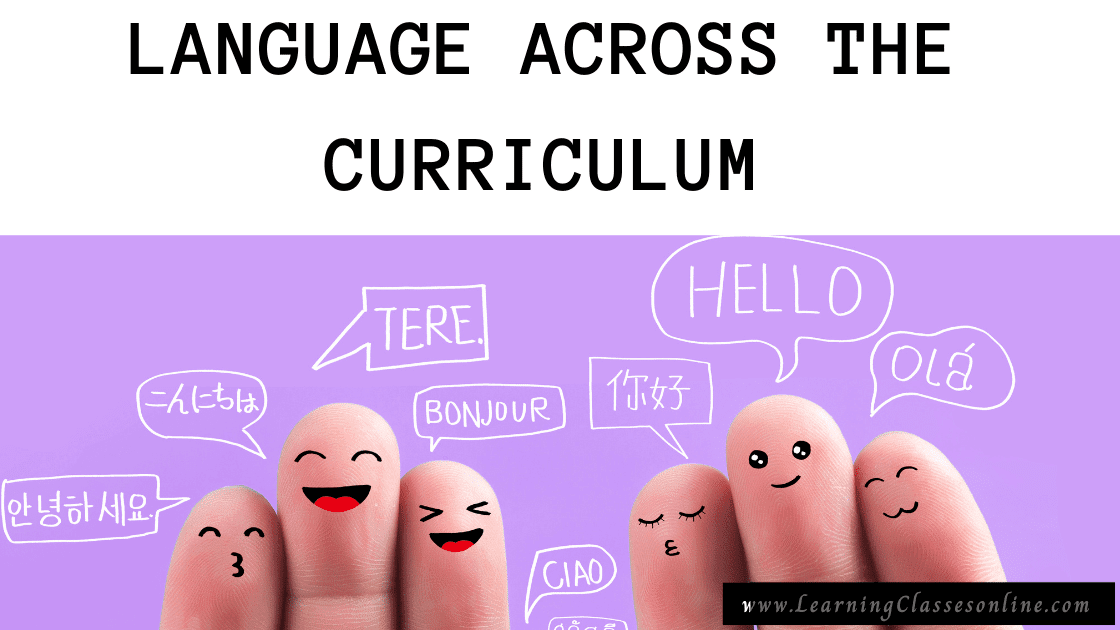Language Across the Curriculum
“Language across the curriculum” refers to the idea that language is not just confined to language arts classes or subjects like English. It is integral to all areas of learning, including math, science, history, and the arts. Language isn't just a tool for communication; it's a vehicle for thinking, learning, and understanding the world. Here’s a big breakdown of what it means and how it functions:
1. The Role of Language in Learning
Language serves multiple functions in education:
- Cognitive Development: Language helps students process and organize information. The act of speaking, writing, reading, or listening allows students to articulate their understanding, analyze problems, and connect new knowledge to prior experiences.
- Disciplinary Language: Every subject area has its own specific vocabulary and ways of communicating. For example, math has terms like “algorithm” and “equation,” science uses words like “hypothesis” and “experiment,” and history relies on terms like “empire,” “revolution,” and “colonization.” Being able to understand and use this disciplinary language is key to mastering any subject.
- Critical Thinking and Reasoning: Language allows students to engage in critical thinking by providing the structure through which they ask questions, develop arguments, present evidence, and make inferences.
2. The Importance of Language Across Subjects
In traditional education models, language teaching is often separated from other subject areas. However, language is essential to how students understand and engage with content in all disciplines. Here's how language functions within different subjects:
- Mathematics: While often seen as a non-verbal subject, math requires students to understand specific terminology (like “product,” “factor,” and “sum”) and the language of problem-solving. Language skills are critical for interpreting word problems, explaining mathematical processes, and justifying answers.
- Science: In science, students must be able to read and comprehend complex texts, understand the language of scientific inquiry, and communicate findings clearly. Concepts in science, such as “photosynthesis” or “osmosis,” are dependent on the precise use of language to convey meaning. Writing lab reports, discussing hypotheses, and explaining scientific phenomena all require mastery of specific language forms.
- History and Social Studies: Historical texts often use complex language, and students must be able to interpret primary sources, such as documents or speeches, which are often written in specific historical contexts. Understanding language in history also means recognizing how terminology can shape narratives, perspectives, and ideologies.
- The Arts: Whether visual arts, drama, music, or literature, language is used to analyze, critique, and discuss artworks. In literature, for instance, understanding literary devices like metaphor, symbolism, and irony is part of language learning. In music, terminology about rhythm, pitch, and dynamics plays a role in how students discuss and create.
3. Inclusive Language Practices
Language across the curriculum also requires educators to be mindful of students’ diverse linguistic backgrounds. This is especially important in classrooms with English Language Learners (ELLs) or students who use dialects or languages other than standard English. Teachers must use strategies to support language development in all subjects:
- Scaffolding: Teachers can provide language supports like sentence frames, vocabulary lists, and visual aids to help students develop both subject-specific language and general language skills.
- Differentiation: Tailoring instruction to meet the needs of students with varying levels of language proficiency ensures that all students can participate meaningfully in the curriculum. This might involve simplifying language, providing extra time for reading or writing tasks, or offering peer support.
- Contextual Learning: Understanding that language is shaped by context, teachers can encourage students to use language in real-world contexts (e.g., scientific experiments, historical debates, mathematical modeling) so that learning feels relevant and engaging.
4. Literacy and Critical Literacy
Another key aspect of language across the curriculum is fostering literacy (the ability to read and write) and critical literacy (the ability to analyze and critique texts and media). Literacy isn’t just about decoding words or grammar; it’s about understanding how language reflects power, identity, culture, and societal norms. In every subject area, students are encouraged to:
- Interpret and critique the language used in texts.
- Understand how language influences perspectives and arguments.
- Use language effectively to express their own ideas and arguments.
5. Practical Strategies for Integrating Language Across the Curriculum
- Collaborative Learning: Encouraging students to discuss, debate, and explain concepts in groups helps them practice and improve their language skills in subject-specific contexts.
- Explicit Vocabulary Instruction: Integrating subject-specific vocabulary into lessons and encouraging students to use these terms in their speaking and writing helps reinforce their learning.
- Writing Across the Curriculum: Encouraging students to write regularly in all subjects (not just in English classes) reinforces the role of writing as a tool for thinking. For example, students might write lab reports in science, summaries in social studies, or reflections in art.
- Reading Comprehension Strategies: Teaching strategies such as summarizing, questioning, and predicting can help students better comprehend complex texts in any subject area.
6. Assessment of Language Across the Curriculum
Evaluating language use should not be limited to traditional reading and writing assessments but should also consider how students use language to explain, discuss, and demonstrate their understanding across all subjects. Formative assessments like presentations, group work, and project-based tasks allow students to show how they can apply language in diverse contexts.
Conclusion
Language is the foundation upon which learning is built across all subjects. By focusing on language across the curriculum, educators can help students become more skilled communicators, thinkers, and problem-solvers. This approach ensures that students are not just learning subject matter but are also developing the language tools necessary to understand, engage with, and contribute to the world around them. Whether students are reading a novel, solving a math problem, conducting a science experiment, or discussing a historical event, their ability to use language effectively is key to their success.






No comments:
Post a Comment